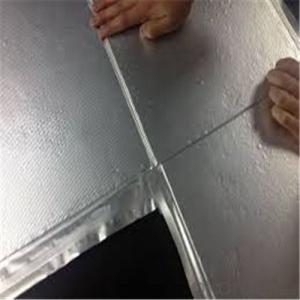When it comes to heating, ventilation, and air conditioning (HVAC) systems, the ductwork is a critical component that often goes unnoticed. But have you ever stopped to think about the type of ducts being used in your home or office? If not, it’s time to consider the benefits of flexible ducts and how they can enhance the performance of your HVAC system.
The Versatility of Flexible Ducts
Flexible ducts, also known as flex ducts, are made from flexible materials that can easily bend and adjust to fit into tight spaces. This versatility is one of the key advantages of using flexible ducts in HVAC systems. They can snake their way through walls, around corners, and into areas that rigid ducts simply cannot reach. This flexibility not only makes installation easier but also allows for more efficient airflow distribution throughout the building.
Easy Installation and Adjustments
One of the most appealing aspects of flexible ducts is their ease of installation. They require less labor and time compared to rigid ducts, which can save you money on installation costs. Additionally, if you ever need to make adjustments or repairs, flexible ducts are much simpler to work with. You don’t have to dismantle an entire system to fix a single section; you can just replace or adjust the affected part of the flexible duct.
Energy Efficiency and Cost Savings
Flexible ducts can also contribute to the energy efficiency of your HVAC system. By allowing for better airflow distribution, they help to ensure that conditioned air is reaching all areas of your home or office evenly. This can reduce the workload on your HVAC system, leading to lower energy consumption and cost savings in the long run.
Custom Fit for Unique Spaces
Every building is unique, and sometimes standard duct sizes and shapes just don’t cut it. That’s where flexible ducts come in. They can be customized to fit the specific needs of your space, whether it’s a historic building with unusual architecture or a modern home with a unique layout. This custom fit ensures that your HVAC system is operating at its best, providing optimal comfort and efficiency.
Improved Indoor Air Quality
Indoor air quality is a major concern for many people, especially those with allergies or respiratory issues. Flexible ducts can actually improve indoor air quality by allowing for better filtration systems to be installed. With the right filters in place, flexible ducts can help to remove dust, pollen, and other allergens from the air, creating a healthier environment for everyone.
The Role of Insulation in Flexible Ducts
Insulation plays a crucial role in maintaining the efficiency of flexible ducts. Properly insulated flexible ducts can prevent heat loss or gain, ensuring that the air being delivered to your living spaces is at the desired temperature. This not only enhances comfort but also reduces the energy needed to maintain that temperature, leading to further cost savings.
Maintenance and Durability
While flexible ducts are known for their durability, they still require regular maintenance to ensure they continue to perform well. This includes checking for any signs of wear and tear, leaks, or blockages that could affect airflow. By keeping your flexible ducts in good condition, you can extend their lifespan and maintain the efficiency of your HVAC system.
The Environmental Impact of Flexible Ducts
Let’s not forget the environmental benefits of using flexible ducts. They are often made from materials that are more sustainable and have a lower environmental impact compared to traditional rigid ducts. By choosing flexible ducts, you’re not only enhancing your HVAC system’s performance but also contributing to a greener environment.
Conclusion
Flexible ducts are an often-overlooked aspect of HVAC systems, but their benefits are undeniable. From their versatility and ease of installation to their energy efficiency and positive impact on indoor air quality, flexible ducts are a smart choice for enhancing the performance of your HVAC system. So, the next time you’re considering an upgrade or installation, give flexible ducts some serious thought. You might just find that they’re the key to a more comfortable, efficient, and environmentally friendly living space.

